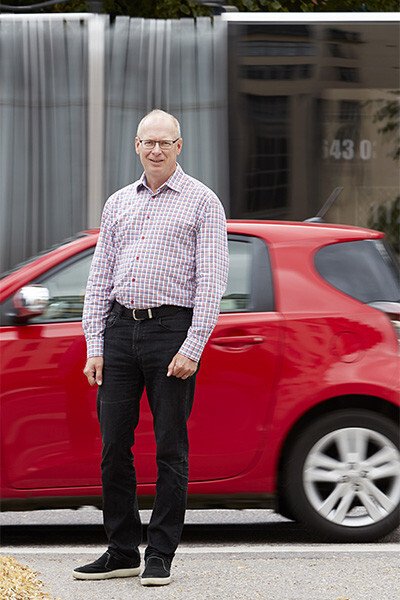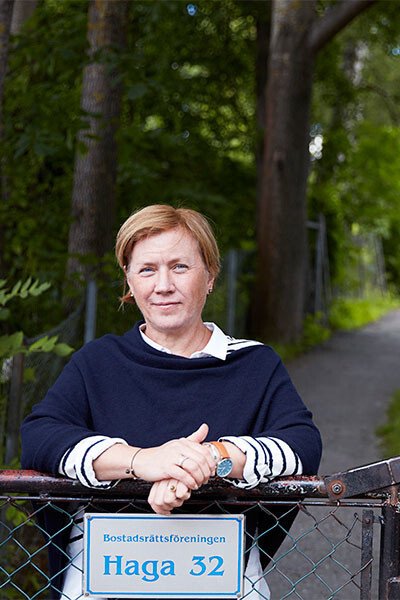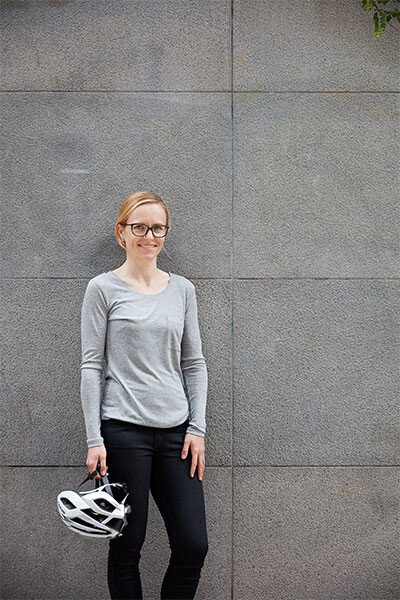Foot on the brake – three researchers on road safety
Each year, around 250 people in Sweden die in road accidents and thousands are badly injured. Globally, road traffic injuries are now the number one killer of young people under the age of 30. How can this be prevented? Meet three researchers who understand the meaning of “Drive carefully!”
“I have been bumped into myself”
Name: Anders Kullgren
Occupation: Head of Traffic Safety Research at Folksam insurance, Adjunct Professor at Chalmers University of Technology and an associate of Karolinska Institutet.
Researches: Risk factors in relation to road traffic injuries.

“Each year, around 3,000 Swedes acquire a medical disability as a result of their injuries in a road traffic accident. Common injuries include concussion and damage to the back, arms and legs. I had started research into whiplash injuries, the most common injury, when someone ran into my car from behind. The other vehicle was only travelling at 20 km/12 miles per hour, but when I started to get a sore neck half a day later I began to worry. I knew that the majority of people affected by this get better quickly. In my case, I got better within three days, but for 16 per cent of people the neck pain does not go away. They acquire a disability that affects their lives.
The whiplash protection we have today varies in effectiveness. A car that gets several stars in a collision test does not necessarily have the most effective protection – and especially not for both sexes. Some protection systems work much less well for women. I think that’s wrong, and I try to influence car manufacturers by disseminating information about new research findings.
Unfortunately, car manufacturers do not put significant resources into developing more effective whiplash protection. Most of their resources go instead into the development of new automated cars and security systems.
It’s thought that the driverless cars of the future will reduce the number of deaths on the road by at least half, which is good, but technology alone will not totally eradicate accidents. Fully-automated cars will probably also be involved in crashes, but they will be less serious. I hope that in the future we will be able to develop more effective protection against whiplash injuries in minor collisions.”
“Children must be able to go to school by themselves”
Name: Marie Hasselberg
Occupation: Professor at the Department of Public Health Sciences
Researches: Injury epidemiology and prevention in a global perspective, including a focus on road traffic injuries.

“I think it’s important that there’s a balance between a child’s development and their safety. Children need to be protected against serious and fatal injuries, but must also have the right to a stimulating environment and not to be overprotected. So we do a lot of work looking at how we can adapt the environment to children and not the other way round.
It’s important for children to be able to get themselves to school on footpaths or cycle paths. Unfortunately a lot of people give their children a lift and that’s not good because you then have too many cars around the school. In Tanzania, where I am also doing work on ways to reduce road traffic injuries, slow vehicles, pedestrians and cars all circulate together. The cars are often old and you can’t always strap yourself in. I am working alongside researchers there on mapping the most dangerous roads, and sometimes if I need to take a taxi in Dar es Salaam I have to travel without a safety belt. It’s difficult to estimate how many people die on the roads.
Unfortunately, unless something is done, there will be more road traffic injuries as incomes rise and more people get a car. But it’s good to see inexpensive interventions that work, such as the rumble strips that have been introduced in places such as Ghana.
In Sweden, over 30 children die on the roads each year. There has been a marked reduction in recent decades, and it is mainly due to safer traffic environments and improvements in children’s car seats. But even though children these days are less exposed as road users, road traffic accidents are still the main cause of child fatalities.”
More about Marie Hasselberg's research
“I do not believe in compulsory cycle helmets”
Name: Evelyne Zibung Hofmann
Occupation: PhD student at the Department of Molecular Medicine and Surgery at Karolinska University Hospital.
Researches: Cycling accidents and how they affect quality of life.

“It was a normal day at work when I decided to start researching cycling injuries. As a doctor, it wasn’t the first time I’d had a patient who had been cycling without a helmet. I looked at the X-rays, which showed a severe head injury, and started to wonder how he might have fared if he had had protection for his head.
Studies from other countries indicate that a helmet law would work – helmets provide protection for the most common head injuries. But I don’t believe in compulsion, I believe in information. Over 70 per cent of cyclists in Stockholm already wear a helmet. Unfortunately some of them wear their helmet too far back on their head. It should sit two fingerwidths above the bridge of the nose so that it also protects the face if there’s an accident.
Around 20 cyclists die each year, down from about 70 in the 1990s. This improvement can be explained not only by increased use of cycle helmets but also by better traffic arrangements for cyclists, with separate cycle paths and marked cycle routes. We don’t know exactly how many cycling accidents there are, but about 8,000 cyclists are taken to hospital each year.
Most of them have minor or moderate injuries and can be discharged after less than a day. Despite that, my research shows that even minor injuries, such as a fractured collar bone or broken nose, can affect people’s lives for a long time afterwards. More than two out of three people state that they experience pain or physical discomfort over half a year after their accident, so it’s important that we keep a check on how patients are doing.”
Text: Maja Lundbäk, first published in Swedish the magazine Medicinsk Vetenskap no 3, 2016. (Some small adjustments made inte the online version in November 2019).
